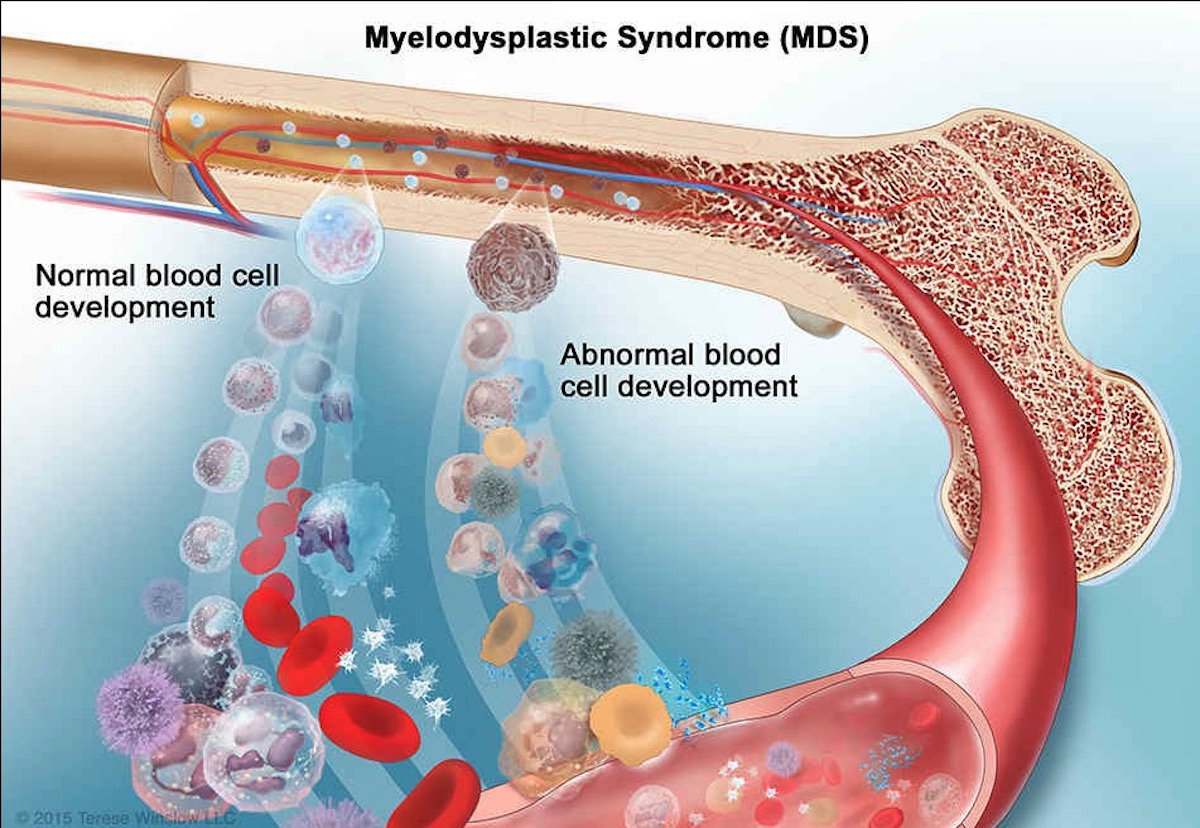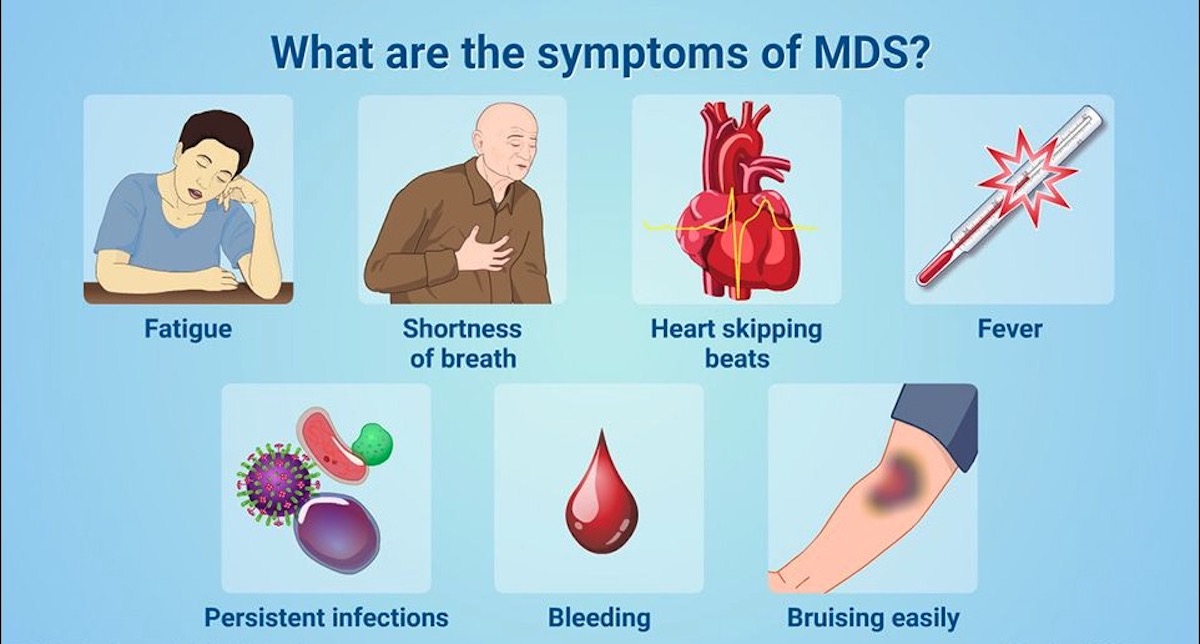Myelodysplastic syndromes, often called MDS or myelodysplasia, are conditions that affect the blood-forming cells in someone’s bone marrow. Chances are you haven’t heard of this disease, but every year approximately 20,000 Americans get diagnosed with MDS. It often affects people older than 70, as the chances of developing it are increasing as you age. MDS leads to serious complications & symptoms. This is why everyone should know how to recognize MDS and what to do if you suspect you, or a loved one, is suffering from it.

What Are Myelodysplastic Syndromes (MDS)?
Myelodysplasia is a group of cancers that prevent someone’s blood stem cells from growing into healthy blood cells. Often this happens because something is wrong with the patient’s bone marrow – the spongy material on the inside of the bones. In a healthy patient, the bone marrow makes new, healthy, immature blood cells, eventually growing into mature blood cells. After a certain period, there are more defective blood cells than healthy and oxygenated blood cells, leading to serious complications, like severe anemia and (acute) myeloid leukemia.
Types of Myelodysplastic Syndromes (MDS)
MDS is called Myelodysplastic syndromes, which of course, means it plural. It’s divided into subtypes based on the type of blood cells and how many blood cells cancer affects. It also depends on whether the bone marrow’s genetic material is normal. Myelodysplastic syndromes are:
- Myelodysplastic syndromes with single-lineage dysplasia; one blood type is low in numbers and looks abnormal.
- Myelodysplastic syndromes with multilineage dysplasia; two or three types are low in numbers and look abnormal.
- Myelodysplastic syndromes with ring sideroblasts; One or more types are low in numbers, and red blood cells have a ring of excess iron on them.
- Myelodysplastic syndromes with isolated del(5q) chromosome abnormality; low numbers of red blood cells and a specific mutation in its DNA.
- Myelodysplastic syndromes with excess blasts; one of three blood types is low in numbers and looks abnormal. There are also very immature blood cells (blasts) found.
- Myelodysplastic syndromes, unclassifiable; reduced numbers of one (or more) blood types and may look abnormal. They can also look normal, but have DNA changes that are associated with MSD.
Two main factors can cause MDS. The first one is inheriting certain conditions, such as Fanconi anemia, Dyskeratosis congenita, Diamond-Blackfan anemia, and Shwachman-Diamond syndrome. The second is through past treatments or exposure to certain chemicals and heavy metals like tobacco smoke, pesticides, mercury, and lead. Recognizing the warning signals of MDS is crucial for an early diagnosis and suitable treatment plan.

Symptoms of Myelodysplastic Syndromes (MDS)
It is possible to develop Myelodysplastic syndromes without experiencing signs or symptoms of the conditions. That’s why it’s important to do a regular health check – and blood check – with your professional healthcare provider and see if everything is still okay. Especially as you get older since in addition to your age, the risk of health problems increases. The most common symptom of MDS is (severe) anemia. Other possible symptoms include:
- Not being able to catch your breath
- Feeling weakened or very tired (even after resting)
- Pale skin
- Easily and more frequently bruised
- Bleed easily and more frequently
- Pinpoint-sized spots on your skin
- Frequent infections and/or fevers
Treatment Options for Myelodysplastic Syndromes (MDS)
If you suspect you or a loved one is suffering from undiagnosed MDS, it’s important to visit and talk to your professional healthcare provider. Your healthcare provider will listen to your concerns and do some tests, if they suspect the same, more tests will be done. This can be a complete blood count (CBC) with differential, peripheral blood smear, cytogenetic analysis, and bone marrow aspiration and biopsy. If the diagnosis of MDS is made, a treatment plan will be made. Often treatment is focused on restoring the blood count to normal/healthy. Treatment options include:
- Blood transfusions
- Medication
- Platelet transfusions
- Chemotherapy
- Immunosuppressive therapy
- stem cell transplants
Doing your own extensive online research and staying up to date about myelodysplastic syndromes and new treatments is essential. If you have already been diagnosed with MSD but are not satisfied with your treatment plan, getting a second opinion in another hospital or oncology center is always smart. Find more information about cancer and its treatment options here.

